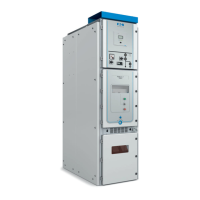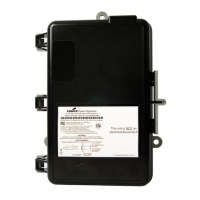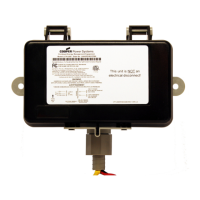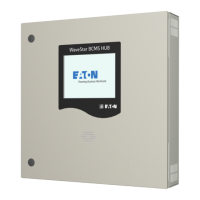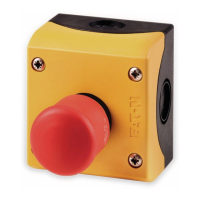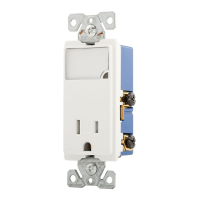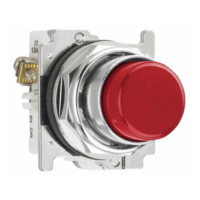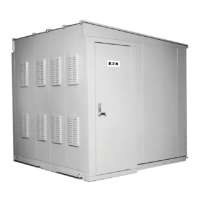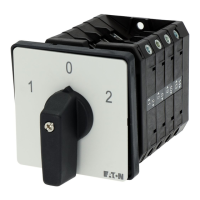7
Instruction Manual IM01500001E
Effective July 2011
Pow-R-Line switchboards
EATON CORPORATION www.eaton.com
Multi-section switchboards are designed to be front- and rear-aligned
or rear (only) aligned. Drawings provided by the manufacturer and
located in the switchboard will show footprint details. Orientation,
as shown on the drawings, must be maintained. (See Figure 10 and
Figure 11.)
Figure 10. Example of Front- and Rear-Aligned Switchboard
Figure 11. Example of Rear (Only) Aligned Switchboard
Sections may contain factory cross bus and/or cable to connect
power between switchboard structures and other components.
Installers should note the location and orientation of all splice plates
and/or cables as reference for installation once sections are joined.
If supplied, remove splice plates and associated hardware, again
noting the orientation for re-installation once switchboard is in place.
If additional hardware is needed to complete these connections,
extra hardware will be provided. For shipping purposes, it will
typically be secured inside one of the structures. Keep bus and hard-
ware in a clean and protected environment to guard against damage
until re-installation. Protect any factory-installed cables (wire) used to
connect components between sections from damage when moving
switchboard sections into place.
An outdoor multi-section switchboard will ship with un-installed
intermediate roof cap(s) for each joint between sections. Remove
roof cap(s) prior to moving sections into their permanent position.
Retain roof cap(s) and associated hardware for re-installation.
Keep roof caps and associated hardware in a clean and protected
environment to guard against damage while awaiting re-installation.
There are two roof designs for outdoor switchboards: the flat roof
design and the sloped roof design.
The standard outdoor switchboard uses a flat roof design, which
does not require any sealant when the intermediate roof cap is
correctly installed in the field.
The optional sloped roof outdoor design also uses an intermediate
roof cap design. When a break occurs between sections for shipping
purposes, the intermediate roof cap on the optional outdoor sloped
roof design shall have a 3/16” minimum bead of silicone sealant
(RTV 732) applied to the underneath side of the roof cap. Each roof
cap should have two (2) continuous beads of sealant from end to
end. Each bead must be located between the row of mounting holes
and the outer edge of the roof cap. A tube of sealant is provided
with every outdoor switchboard for customer’s use.
Use caution and appropriate equipment and practices when
moving switchboard into its final position.
WARNING
SWITCHBOARD IS TOP-HEAVY. USE CARE IN HANDLING.
Exercise caution while maneuvering top-heavy switchboard sections
into place. Switchboard sections must always remain in the upright
position during installation. Use care when moving the switchboard
so not to damage the section, including the structural base and
frame. Some switchboards house sensitive components, which
can be damaged by rough handling.
Prior to moving the switchboard sections into permanent position,
make note of all obstacles including conduit stubs. Implement a plan
for safe transition and appropriate means to accommodate these
obstructions. Take note of conduits entering through the bottom
of the switchboard, the rear of the switchboard, and at the top of
the switchboard to ensure appropriate clearances from chassis,
structure, cross bus, ground, neutral, and components.
Provide space for a minimum 1/2” clearance from back of
switchboard and any wall for front-accessible switchboards
installed indoors.
Refer to the National Electrical Code (NEC) for required switch-
board clearances.
When unpacking the switchboard, exercise care not to scratch or
mar the finish. Repair all scratches with touch-up paint, which is
available from Eaton. Remove shipping skids and all packaging
material. Remove any temporary shipping braces or spacers.
Remove lifting angles and associated hardware. Plug lifting angle
holes with hole plugs supplied by the manufacturer. (See Figure 12.)
Figure 12. Hole Plugs Installed
Where two or more switchboard sections are to be joined together,
they should first be aligned and all sections leveled.
Once aligned and level, attach switchboard sections together.
Switchboard Front View
Switchboard Front View
Example of hole
plugs installed

